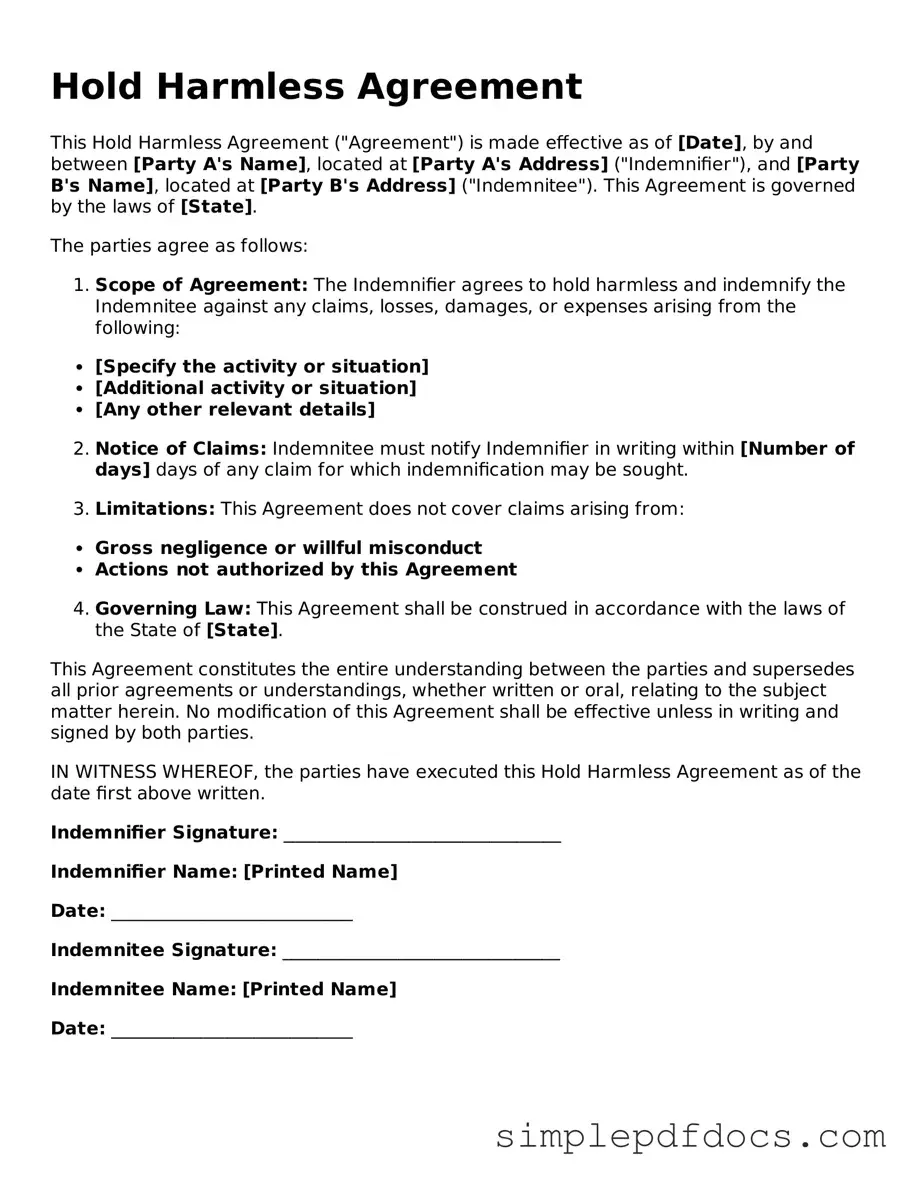When entering into agreements that involve potential risks, individuals and businesses often seek to protect themselves from liability through a Hold Harmless Agreement. This important legal document serves to ensure that one party agrees not to hold the other responsible for any losses, damages, or injuries that may arise during the course of their relationship. Typically used in various contexts, such as construction projects, rental agreements, and event planning, the Hold Harmless Agreement outlines the responsibilities and liabilities of each party involved. It can provide peace of mind by clearly defining the extent of liability and can be tailored to suit specific situations, whether it involves indemnifying one party against claims or waiving certain rights. Understanding the nuances of this agreement is crucial, as it not only helps in risk management but also fosters trust between parties by establishing clear expectations. With the right knowledge, individuals and organizations can navigate the complexities of liability and ensure that they are adequately protected in their dealings.
